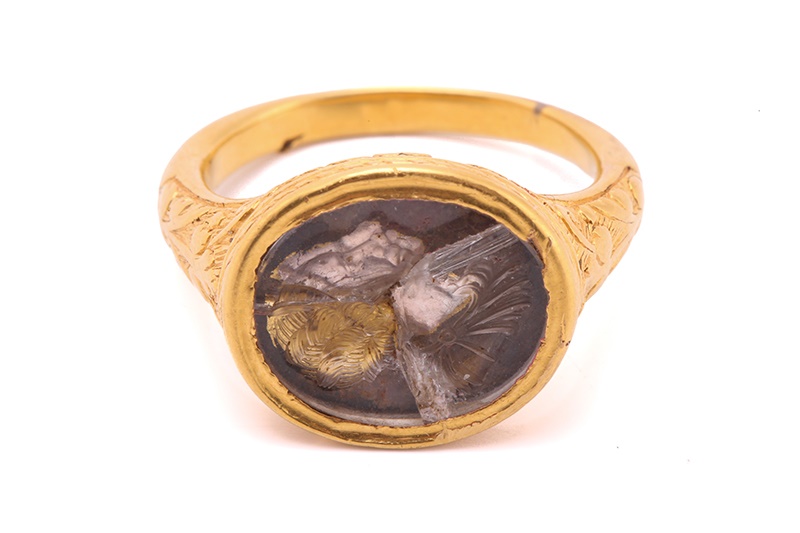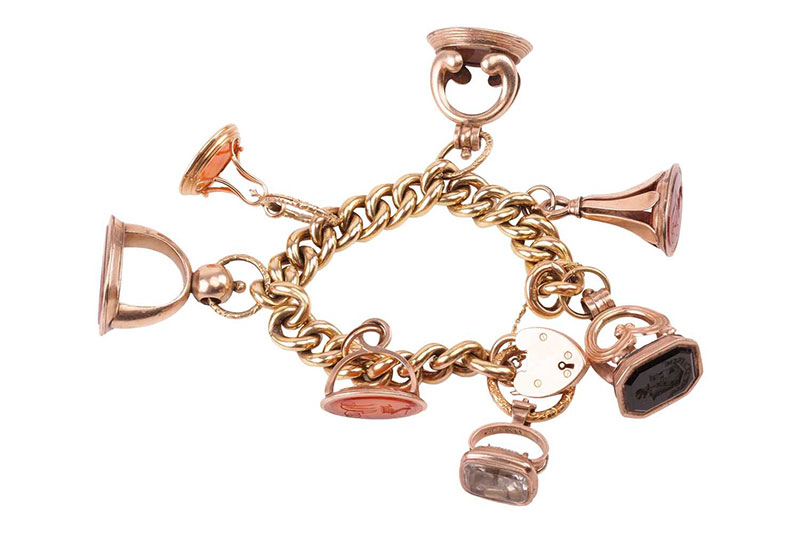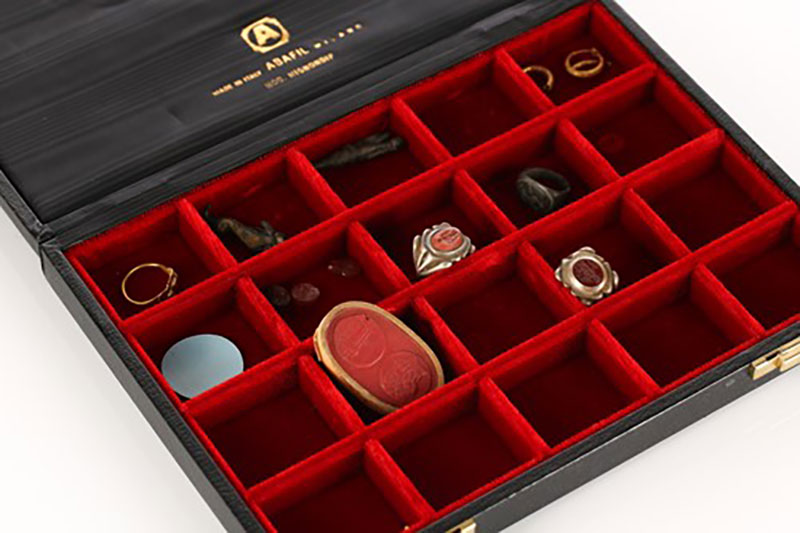What is Intaglio Jewellery?
The art of intaglio jewellery saw a revival during the Renaissance period, particularly in Italy
18/02/2025
Derived from the Italian word "intagliare," meaning "to carve, intaglio refers to a technique where designs are engraved into the surface of a gemstone, metal or glass, as opposed to cameo which is a relief image. The design is carefully engraved in reverse, ensuring that the final impression appears correctly when pressed into a soft material such as wax. These ‘counter-relief’ engraved designs can range from simple patterns such as family marks, to highly detailed scenes from mythology, religious iconography, and portraiture.
The earliest known examples of intaglio carvings can be traced to around 5000 BC Mesopotamia, and, in ancient Egypt, intaglio amulets carved with hieroglyphics were often buried with the deceased. However, the Greeks and Romans elevated intaglio artistry to new heights, with elaborate and detailed carvings on gemstones such as cornelian, onyx, and sardonyx. Mostly set into rings, these pieces were not only used as personal adornments but also as seals in the form of signet rings for important documents at a time when a signature was not an official sign of identity. The more elaborate the engraving, the more difficult it was to forge, and conveyed status to the bearer.
The art of intaglio jewellery saw a revival during the Renaissance period, particularly in Italy. Renaissance artists, inspired by the classical traditions of ancient Greece and Rome, created intricate intaglio designs that showcased their exceptional craftsmanship. The Neo-Classical movement of the early 18th Century was marked by a renewed interest in Roman artifacts and craftsmen made beautifully engraved copies of the originals, which were used in elaborate jewellery and memento-mori.
As the practical use of seals diminished, the latter half of the 18th Century saw intaglio jewellery somewhat fall out of fashion in favour of cameos. However, the Victorian revival of intaglio saw the engravings often set elaborately, creating a highly decorative piece of jewellery. Intaglio techniques are still used in jewellery today and there is a healthy collector’s market for antique pieces.
The authentication and appraisal of intaglio jewellery requires microscopic examination of the style, material, and engraving techniques to determine the authenticity and origin of a piece. Earlier pieces are more likely to have been engraved by hand, requiring more skill and patience than later wheel engraving.
Dawsons have extensive experience of selling all types of intaglio jewellery, from Roman pieces right through to Victorian, and later. In the recent past, the team here at Dawsons were privileged to research, globally market and then sell a post-medieval intaglio ring, circa 1575-1650, featuring an oval glass carved with a Neoclassical bust and gilded in silver and gold which fetched a hammer price of £14,000, far in excess of its estimate range.
Roman antiquities, comprising a gold ring, 2/3rd century AD
read more
Is Antique Jewellery Worth Anything?
Is There a Market for Vintage Jewellery?
The World's Most Famous Jewellery Designers

Nicky Houston
Our Head of Department - Jewellery, Silver & Watches... Nicky is a highly respected Auctioneer & Valuer, who had dreams of becoming an artist. Whilst she may not have made it as a successful artist herself, Nicky has helped many a customer to successfully sell and buy beautiful pieces of jewellery and works of art over her many years working within the auction industry.
Jewellery Silver & Objects of Virtue Watches
Are you thinking of selling any Intaglio jewellery?
With a global audience of more than 10 million known bidders, Dawsons can secure the highest prices.
Get in touch with an expert Valuer for confidential sales advice, we would be delighted to help you:


